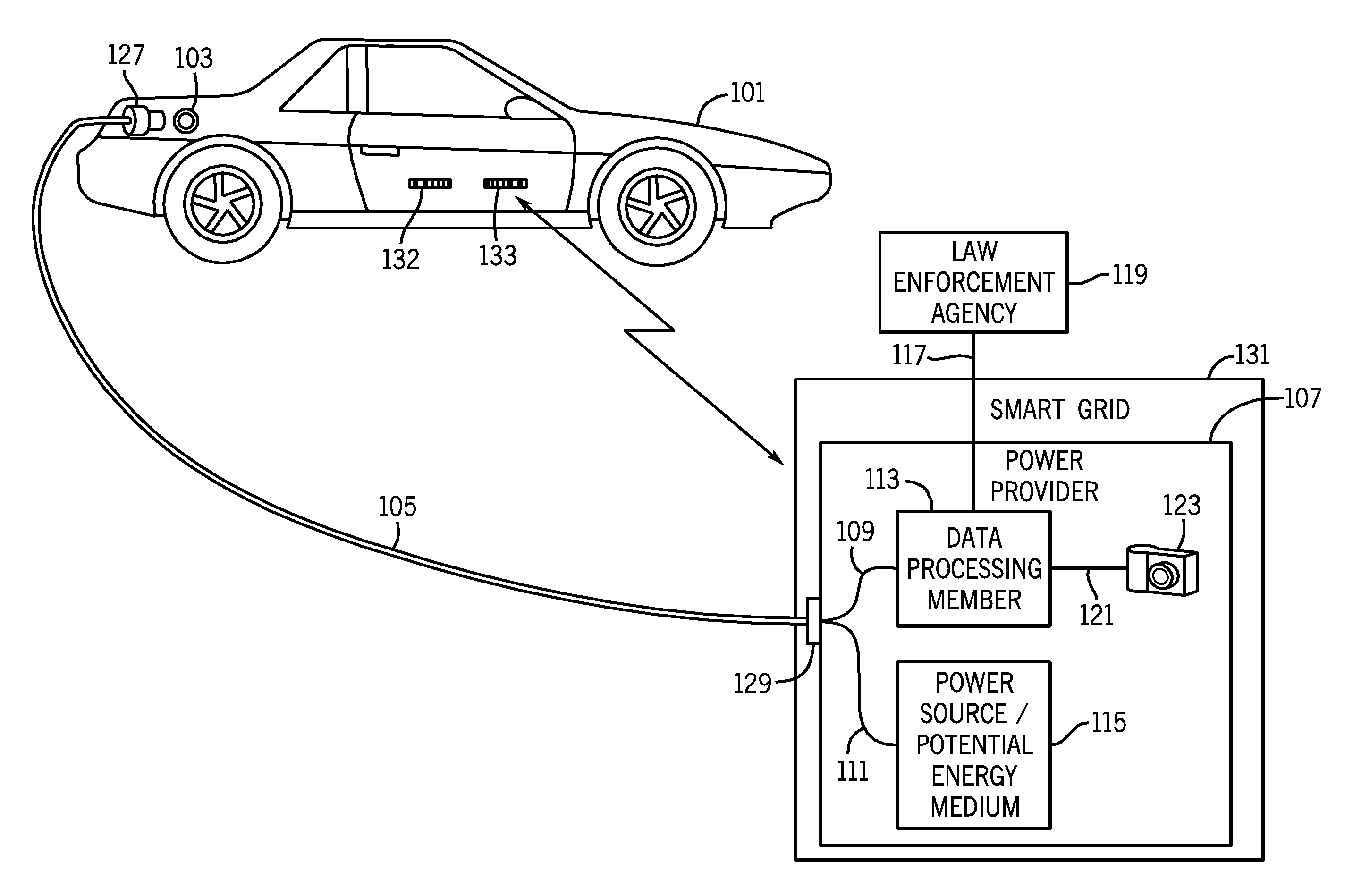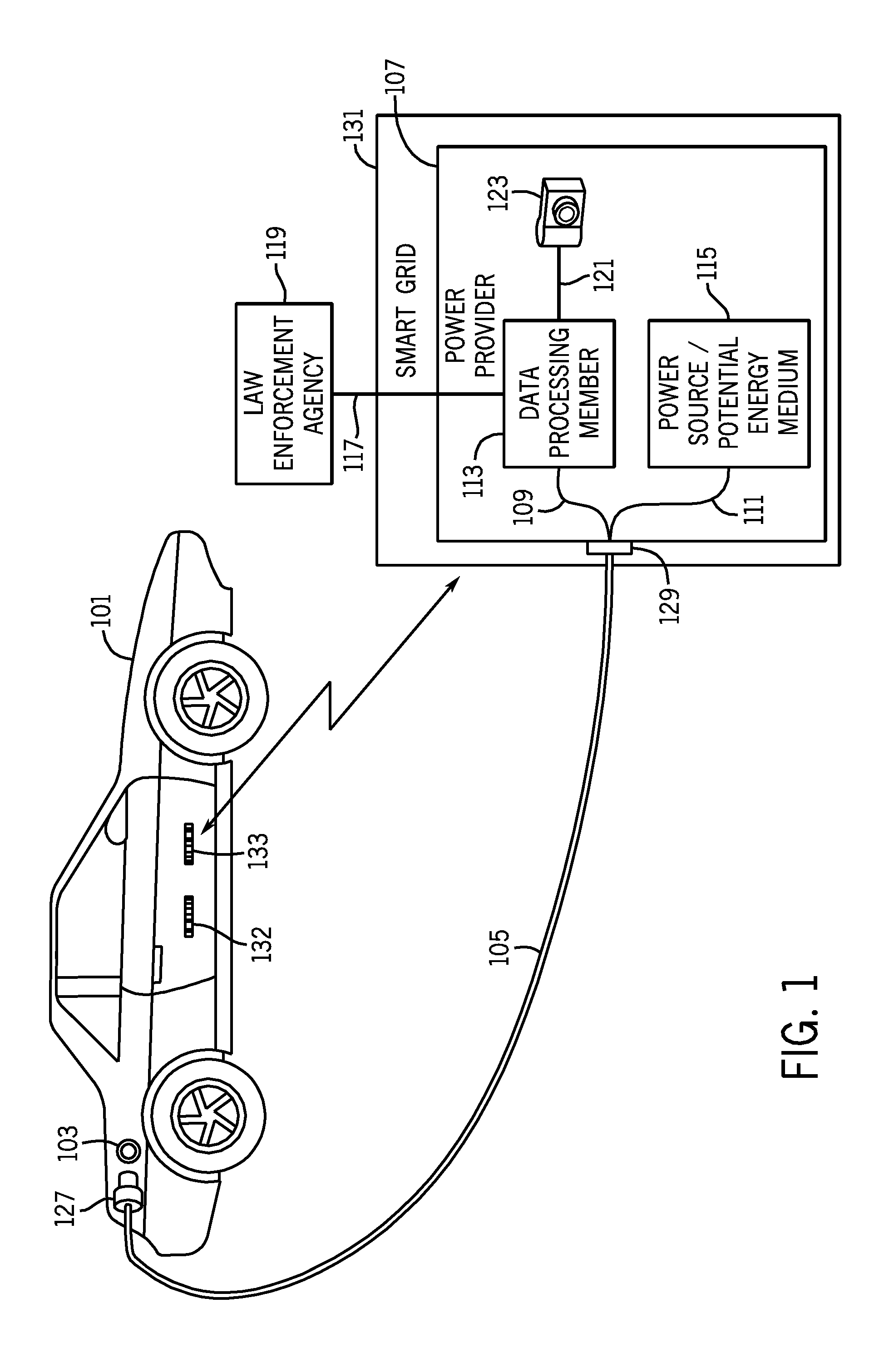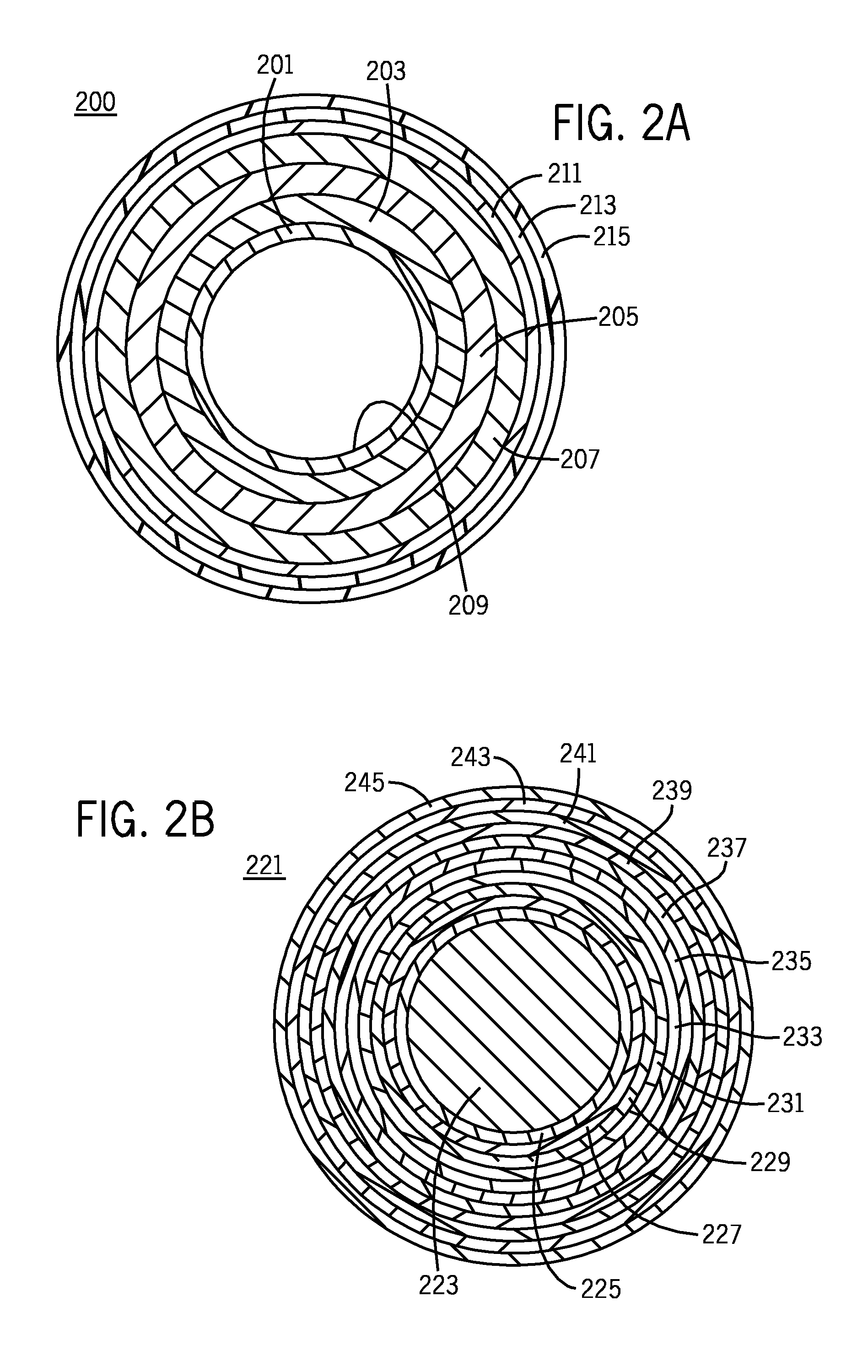Method and apparatus for controlling the recharging of electric vehicles and detecting stolen vehicles and vehicular components
a technology for electric vehicles and vehicle components, applied in the direction of program control, television systems, instruments, etc., can solve the problems of increasing world demand and decreasing reserves, affecting world stability and peace, and not being able to develop ultra capacitors,
- Summary
- Abstract
- Description
- Claims
- Application Information
AI Technical Summary
Problems solved by technology
Method used
Image
Examples
embodiment 200
[0032]FIG. 2A depicts a cross sectional view of a hollow tub embodiment 200 of the energy transfer line 105 of FIG. 1. A hollow section 209 for transferring a chemical potential energy medium (hydrogen, gasoline, etc) is surrounded by a chemically resistant material 201 selected to resist deterioration and leakage that might be induced by the chemical potential energy medium. The resistant layer 201 is surrounded by a first electrically conductive layer 203 which is surrounded by first electrically insulating layer 205 surrounded by a second electrically conductive layer 207 surrounded by a second electrically insulating layer 211 surrounded by an electromagnetic shield layer 213 surrounded by an outer insulative layer 215. According to this configuration, the digital communication with the smart grid, and the process described in FIG. 7, may be conducted with traditional petroleum based vehicles, or hydrogen vehicles.
embodiment 221
[0033]FIG. 2B depicts an alternative embodiment 221 of the energy transfer line 105 of FIG. 1 configured to transmit electrical power for recharging energy storage units of an electric vehicle. The core 223 is comprised of an electrically conductive material having a cross section suitable to transmit electricity at levels appropriate for recharging a vehicle in a predetermined time period. The second layer 225 is a first electrically insulating layer. The third layer 227 is an electrically conductive layer functioning as a return line for power transmission. The fourth layer 229 is a second electrically insulating layer. Although embodiments are envisioned in which digital signal transmission occurs over the power lines 223, 227, FIG. 2B depicts additional conductive and insulating layers which can accommodate digital signal transmission over lines distinct from the power transmission lines 223, 227. Layer 231 comprises an inner conductive shield to protect the digital signal trans...
first embodiment
[0060]Because components may be legitimately bought and sold, it is foreseeable that the network address 411 of a component may have to be reassigned. The network address of an electric motor and a first car may be, for example, a binary value 00010. A vehicular component could be legitimately sold and assembled in a second car, in which the binary value 00010 has already been used as a network address for some other component. According to a preferred embodiment, the data field used to store the network address 411 of a vehicular component is therefore stored in a writable data field. the network address is erasable. If the first component is sold and assembled in a different vehicle, if necessary, the network of vehicular components can be erased, and a new network address written in the field.
PUM
 Login to View More
Login to View More Abstract
Description
Claims
Application Information
 Login to View More
Login to View More - R&D
- Intellectual Property
- Life Sciences
- Materials
- Tech Scout
- Unparalleled Data Quality
- Higher Quality Content
- 60% Fewer Hallucinations
Browse by: Latest US Patents, China's latest patents, Technical Efficacy Thesaurus, Application Domain, Technology Topic, Popular Technical Reports.
© 2025 PatSnap. All rights reserved.Legal|Privacy policy|Modern Slavery Act Transparency Statement|Sitemap|About US| Contact US: help@patsnap.com



